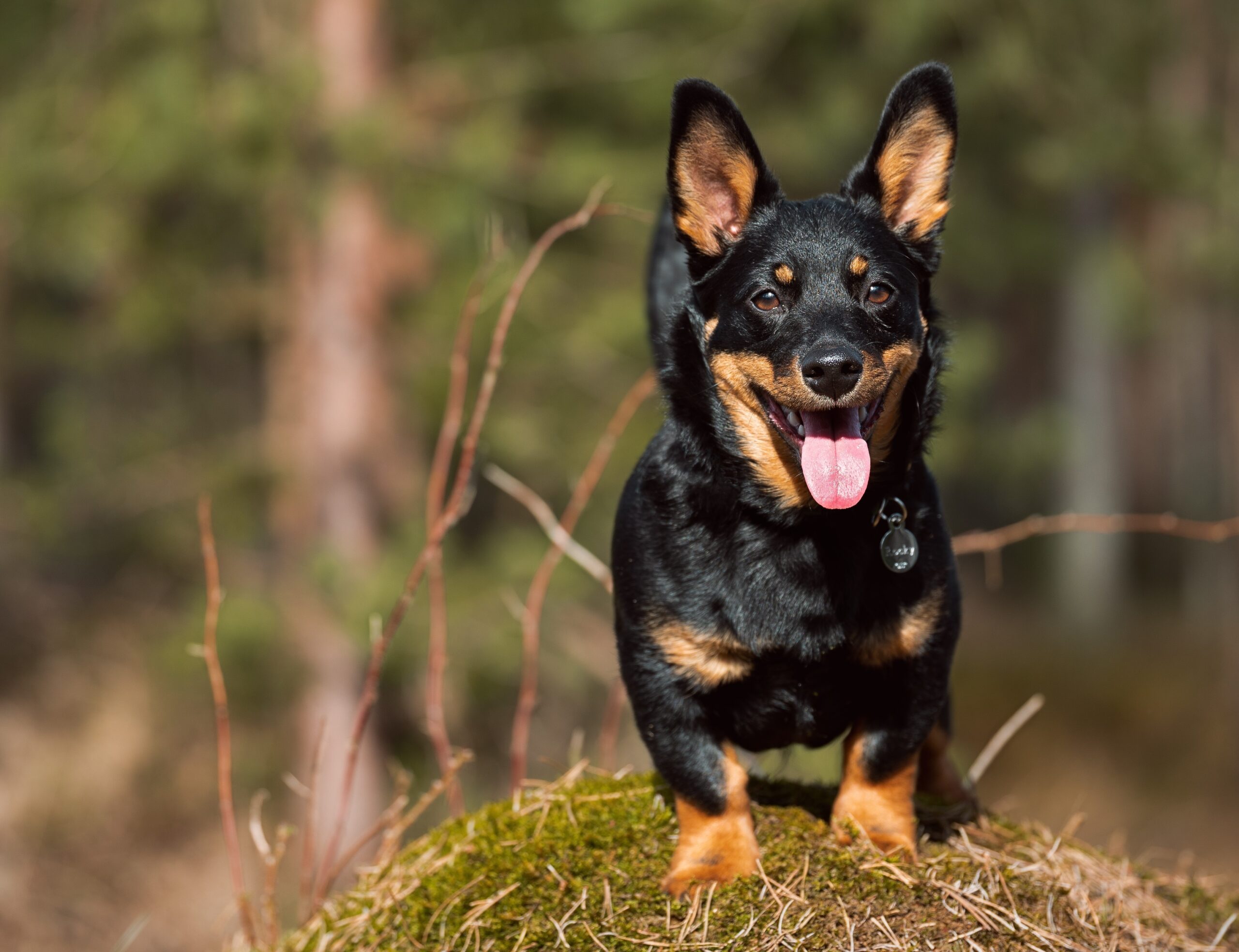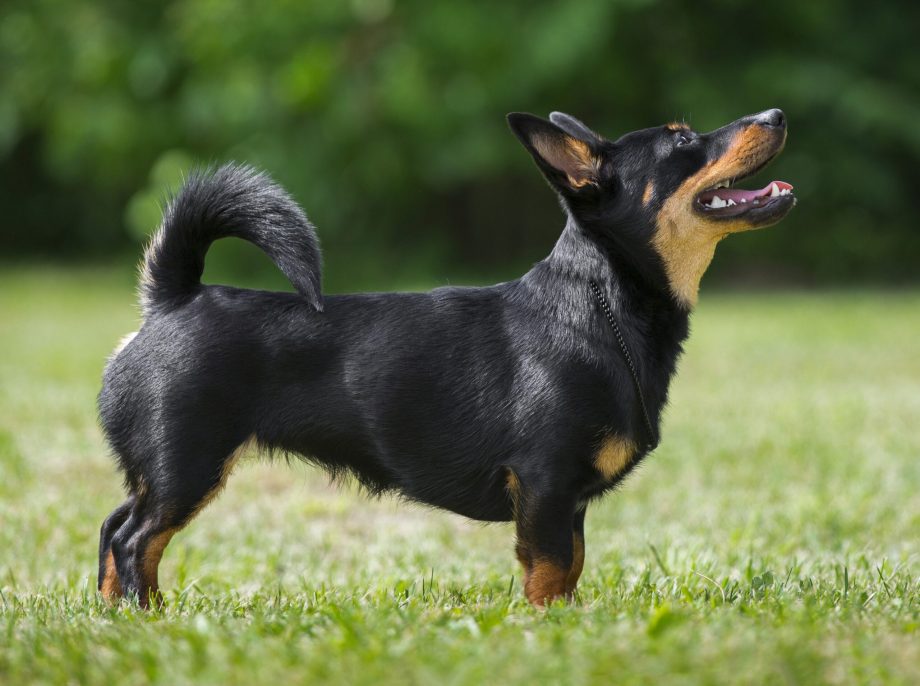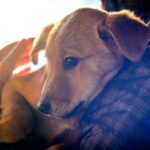The Lancashire Heeler is a small breed of dog originally developed to herd cattle. A cross between the Welsh Corgi and the Manchester Terrier, this powerful little dog has inherited its lowness to ground and heeling instinct from the corgi and its spirit and colouring from the terrier.
Its powerful body is sturdily built, long and low to the ground. They have a short, shiny weather-resistant coat that is typically black and tan but can also be seen in liver with tan markings. The coat is slightly longer around the neck and on the tail. A unique characteristic of the breed is the Heeler Smile where Heelers draw back their lips, emulating a human smile. These are happy and energetic dogs, always alert and ready to learn new tasks. They are full of charm and character, making them affectionate companions. They can be good family dogs, although may do better with older children, with whom they will love to play. Lancashire Heelers may not like all dogs and will certainly let them know if that is the case. Easily socialisation with other dogs and people is important with this breed. So too is training, without which this intelligent dog can be mischievous and stubborn. However, as they are smart, they are also quick to learn and easy to train. As hardy little dogs designed for nipping at the heels of cattle, they will greatly enjoy getting outdoors and having the opportunity to play. However, what they love most is human attention and this happy dog will be content to just be by its owners side.
History

The exact origins of the Lancashire Heeler are unknown. What is known is that a type of Welsh Corgi was used to drive cattle from Wales to Ormskirk, Lancashire in the northwest of England. This dog was then crossed with the local Manchester Terrier, a type of black and tan terrier resulting in what is now known as the Lancashire Heeler. The dog was used for a variety of purposes, from herding to killing vermin. The breed has been known in its home county for over a hundred and fifty years as a general-purpose farm dog, capable of both ratting and herding cattle. The breed was recognised as a vulnerable native breed by The Kennel Club in 2006, which means that annual registration figures are 300 or less for the breed.






